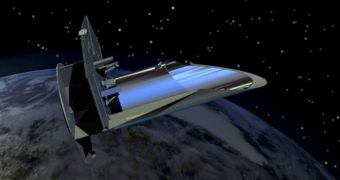Mark Swaim, an expert at the NASA Jet Propulsion Laboratory (JPL), in Pasadena, California, is the principal investigator of the newly proposed Fast INfrared Exoplanet Spectroscopy Survey Explorer (FINESSE) spacecraft. The satellite's mission will be to analyze exoplanetary atmospheres.
This is the first mission ever proposed for this specific application. If selected for launch, FINESSE will spend two years in Earth's orbit, analyzing about 200 known extrasolar planets, and trying to determine what their atmospheres are made of.
If developed in the manner experts proposed, the spacecraft will also be able to analyze the surfaces composition of these alien worlds as well, and maybe even find out more about their weather patterns.
By using data from FINESSE in conjunction with information from other telescopes, and computer models, it may become easier for scientists to figure out which worlds are the most likely to be habitable, and which of them could never support life.
The spacecraft would conduct its mission by collecting spectroscopic data on these exoplanets. This mission is not a planet-hunter, like the NASA Kepler or the French CoRoT satellites, but rather a follow-up instrument, capable of expanding our knowledge of the worlds the former two discover.
FINESSE is one of five proposals made by experts under the NASA Explorers program. Two of them will be selected for further development in February 2013, and could be launched by 2016. Other proposals focus on Earth's atmosphere and ionosphere, solar coupling, and hunting exoplanets.
If launched, the main instrument aboard the JPL spacecraft will be an Offner spectrometer, a modified version of the Moon Mineralogy Mapper instrument that the Lab built for the Chandrayaan-1 spacecraft. The latter was launched in lunar orbit by the India Space Research Organization (ISRO).
FINESSE's main point of focus will be scanning for the molecular bands of water, methane, carbon monoxide, carbon dioxide, and other molecules in the atmospheres of exoplanets.
By figuring out what types of chemicals are available on these words, it may become possible to determine the type of chemistry that is possible at those locations. If all goes according to plan, FINESSE will launch by October 2006, Astrobiology Magazine reports.

 14 DAY TRIAL //
14 DAY TRIAL //